

Hide/Show
9:00 a.m.–9:35 a.m. | Track: Education | CRCE: 0.58
Randy Case, PhD, RRT, RRT-NPS
Show description

Experiential learning is an engaged learning process where students “learn by doing” and by reflecting on the experience. By engaging students in hands-on experiences and reflection, they are better able to connect theories and knowledge learned in the classroom to real-world situations. Yet educators often avoid this type of learning environment when faced with the topic of research. This presentation will focus on developing and implementing a robust experiential learning environment centered on the subject of research. It can often be difficult to engage today’s student population within a research course. However, this presentation will provide methods and strategies to motivate and encourage active participation within undergraduate student research endeavors.
9:00 a.m.–9:35 a.m. | Track: Clinical Practice | CRCE: 0.58
Douglas Gardenhire, EdD, RRT, FAARC
Show description

Respiratory care pharmacology continues to change. Many respiratory therapists may be unaware of changes that exist in the medications used today. This lecture will discuss additions and deletions of agents used in respiratory care. The presenter will provide an update on newer medications as well as inform attendees about agents no longer in use.
9:00 a.m.–9:35 a.m. | Track: Clinical Practice | CRCE: 0.58
Kelly Long, LRT, CCT, C-IAYT
Brian Wicker, LRT, RRT, RRT-NPS
Show description


This is a discussion on a 3+ year-long study looking at the impact of placing a respiratory therapist in the post-acute setting of the home to decrease hospital readmissions while adding value to the Institutions and physician practices. This program sheds light on redefining and expanding our roles and the significance in the post-acute arena.
9:00 a.m.–9:35 a.m. | Track: Neonatal/Pediatrics | CRCE: 0.58
Kendra Smith, MD
Show description

Infants with severe cardiopulmonary failure commonly require Extracorporeal Life Support (ECLS) to maintain effective gas exchange and hemodynamic support. This lecture will review ECLS indications, physiology, level of support provided with different forms of ECLS and address the general management of the patient on ECLS.
9:00 a.m.–11:50 a.m. | Track: Clinical Practice, Education
9:00 a.m.–9:35 a.m. | CRCE: 0.58
Denise Willis, MSc, RRT, RRT-NPS, AE-C, FAARC
Show description

Becoming an effective reviewer takes time, training, and effort. What are the tricks of the trade? How do you decide if you should accept a request for review? This talk will provide several methods to approach peer review of a scientific paper.
9:45 a.m.–10:20 a.m. | CRCE: 0.58
Jie Li, PhD, RRT, RRT-ACCS, FAARC
Show description

Narrative and systematic review must follow published guidelines. There are requirements for literature research, methods for choosing the appropriate publications and data presentation. These will be reviewed in detail.
10:30 a.m.–11:05 a.m. | CRCE: 0.58
Andrew Miller, MSc, RRT, RRT-ACCS, RRT-NPS, FAARC
Show description
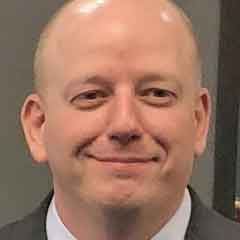
Presenting research at the Open Forum is a highlight of a researcher’s career. Writing an effective, clear, and detailed abstract is crucial for gaining acceptance. Creating an effective poster presentation is important for both conveying information and demonstrating mastery of the topic. This talk will provide tips on how to get to the Open Forum and shine.
11:15 a.m.–11:50 a.m. | CRCE: 0.58
Rich Branson, MSc, RRT, FAARC
Show description

Journals are often judged based on the impact factor, a measure of the number of times papers published in the past two years have been cited in the current calendar year. New metrics including the immediacy index and calculation of an H factor for authors have become popular. Altmetrics is a score which encompasses how often the paper is cited, how often it is picked up in the lay press, and how often it is posted to Twitter, Facebook, and other social media platforms. This presentation will discuss how Respiratory Care is introducing Altmetric badges for published papers. How can you use this information and how might you enhance the reach of your work?
9:45 a.m.–10:20 a.m. | Track: Education | CRCE: 0.58
Melissa J. Yanes, MS, RRT, RRT-ACCS
Show description
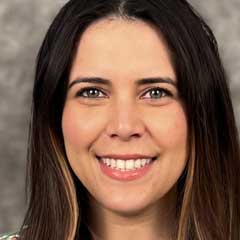
Interprofessional Education (IPE) has become a focus for healthcare professions to prepare students for the changing healthcare dynamic around collaborative care. Interprofessional Education with hands-on patient opportunities and the ability to provide interdisciplinary training in outpatient settings are key educational elements to improve health professions education. In this presentation, attendees will learn how an interprofessional student-run community clinic and interprofessional curriculum can provide a rich learning environment for students from different programs. In addition, attendees will learn the role respiratory care students have in a student-run clinic that provides primary care and chronic disease management to uninsured patients.
9:45 a.m.–10:20 a.m. | Track: Clinical Practice | CRCE: 0.58
Arzu Ari, PhD, RRT, FAARC
Show description

This presentation will review evidence on the selection of the aerosol device and interface for patients with pulmonary diseases. Also, some strategies to help clinicians match the best aerosol device to the needs of specific patient populations to promote effective aerosol drug delivery will be provided.
9:45 a.m.–10:20 a.m. | Track: Neonatal/Pediatrics | CRCE: 0.58
Lindsay Olmstead, MHA, RRT, RRT-NPS
Audrey Pitts, RRT, BSRT
Show description


The role of the bedside respiratory therapist is continually progressing along with the need to improve communication among interdisciplinary teams. The creation of RT-driven protocols provides more autonomy in the clinical setting. Norton Children’s Hospital in Louisville, KY, created an airway decision-making algorithm in the pediatric population. This was implemented to promote educated decisions by health care providers, improve pre-airway clearance assessment, and support the role of airway clearance in the treatment of pediatric patients.
10:30 a.m.–11:05 a.m. | Track: Education | CRCE: 0.58
Chip Zimmerman, PhD, RRT, FAARC
Show description

This presentation will provide attendees with an overview of how to integrate the four core competencies of interprofessional education into clinical practice. The core competencies discussed will be drawn from the 2016 update published by the Interprofessional Education Collaborative, and include Values/Ethics for Interprofessional Practice, Roles/Responsibilities, Interprofessional Communication, and Teams & Teamwork. The speaker will discuss the sub-competencies of each core competency, and the role each plays in the respiratory therapist's ability to provide effective team-based care in the clinical education setting.
10:30 a.m.–11:50 a.m. | Track: General | CRCE: 0.00
Carl Hinkson, MSc, RRT, RRT-ACCS, RRT-NPS, FAARC—AARC President
Teresa Volsko, MBA, RRT, FAARC — ARCF Secretary/Treasurer
David Vines, PhD, RRT, FAARC—NBRC President
Kevin O’Neil, MD, MHA, FACP, FCCP—CoARC President
Show description



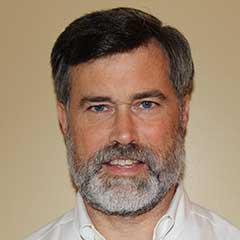
The leadership of the AARC, ARCF, CoARC, and NBRC will present the most updated information affecting the profession, research, accreditation, and credentialing. This is a must-attend session in your agenda!
10:30 a.m.–11:05 a.m. | Track: Clinical Practice | CRCE: 0.58
Michael Lipnick, MD
Show description

Some pulse oximeters function less accurately in patients with darker skin. What is known about this issue and what should be done about it? This session will review pulse oximeter performance, racial inequity, and future changes that will ultimately reduce bias in pulse oximeter performance and improve patient safety.
10:30 a.m.–11:05 a.m. | Track: Neonatal/Pediatrics | CRCE: 0.58
Kelly Massa, BHS, RRT, RRT-NPS
Show description

This presentation will review the purpose of ventilator waveforms/graphics and the type of waveforms there are while breaking down ventilator modes. Attendees will leave with an understanding on time scalars and where to look and how to intervene when there is an asynchrony present.
11:15 a.m.–11:50 a.m. | Track: Adult Acute Care | CRCE: 0.58
PRO: Dean Hess, PhD, RRT, FAARC
CON: Brady Scott, PhD, RRT, FAARC
Show description
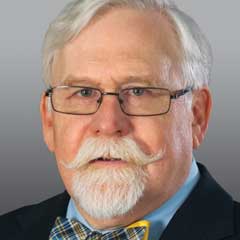
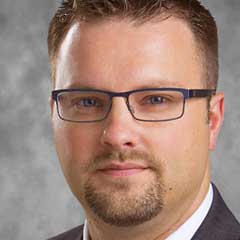
In recent years there has been increasing interest in noninvasive measures of gas exchange such as pulse oximetry, capnography, and transcutaneous monitoring. This lecture will highlight the shortcomings of these measures and make the case that arterial blood gases remain the standard to assess gas exchange.
11:15 a.m.–11:50 a.m. | Track: Neonatal/Pediatrics | CRCE: 0.58
Ariel Berlinski, MD, FAAP, FAARC
Show description
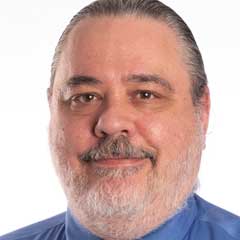
Primary ciliary dyskinesia (PCD) is an inherited disorder caused by defects in the structure and function of cilia, resulting in respiratory impairment. The presentation will review primary diagnosis and management of PCD, including implications for the respiratory therapist.
11:15 a.m.–11:50 a.m. | Track: Education | CRCE: 0.58
Randy Case, PhD, RRT, RRT-NPS
Show description

As children, we instinctively use games as a pedagogical tool to enrich our emotional, sensory, motor, cognitive, intellectual, and social development. This natural process is seen in primary schools as teachers use games to captivate students’ attention and engage with them. When playing games, learners become the central actors of their learning process, unlike the passive position they often occupy in traditional education. So, could this style of teaching be successfully used within the respiratory therapy curriculum? This presentation will discuss implementing educational games into your curriculum, which has the potential to increase student motivation, give students the option to learn while having fun, and support student-centered education.
12:00 p.m.–12:50 p.m. | Track: Adult Acute Care | CRCE: 0.83
Jie Li, PhD, RRT, RRT-ACCS, FAARC
Show description

Prone position has long been known to reduce mortality in mechanically ventilated patients with ARDS who have moderate to severe hypoxemia. With the advent of COVID-19, the use of so-called ‘awake prone’ has become popular despite mixed results in the literature. Typically, mechanically ventilated patients are heavily sedated in the prone position, but more recently encouraging spontaneous breathing has been encouraged with a wide range of results. Finally, prone position during ECMO has been evaluated to determine the potential benefits. The literature on each will be explored in this lecture.
1:00 p.m.–1:40 p.m. | Track: Clinical Practice | CRCE: 0.66
Kathy Rye, EdD, RRT, RRT-ACCS, RRT-NPS, FAARC
Show description

Respiratory Therapists were an instrumental component of the health care team that helped me stand again after a life-threatening bout with COVID-19 in 2020. The closing session will encourage RTs to stand together as we endeavor to move the profession forward in an environment that has been forever changed by the pandemic.
There are no sessions that match your display preferences.